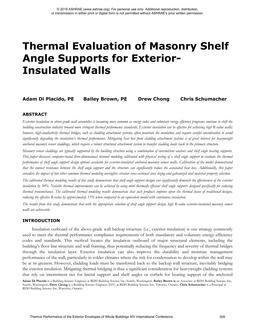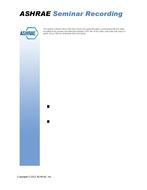“Zero peak communities†(ZPC) have the potential to help electric utilities reduce peak loads, provide affordable and reliable electric power, enhance environmental stewardship, and encourage sustainable economic growth. A “zero peak community†is a subdivision that does not contribute to the utility system peak. This report analyzes energy performance data gathered on the first four of five near zero energy test houses (ZEH) in Lenoir City, Tennessee that are the result of a collaboration among TVA, DOE’s Building America program, Habitat for Humanity Loudon County Affiliate and ORNL between 2002 and 2006. This data shows that these small, all electric, near zero energy houses reduce both summer and winter peak by more than 1 kW or 30-40% per house, yet have the potential to preserve utility off-peak revenue by encouraging more all electric homes, ultimately with a zero peak load on the grid.
This paper proposes utility incentives that could provide the stepping stone to zero peak demand housing with positive cash flow between mortgage and utility bills. The key incentive that could enable zero cost in climates similar to those in Lenoir City are to offer homeowners a premium price for all the renewable power produced at their home site. The utility sells this green power to the customer base willing to pay a premium to have electricity generated by renewable sources. This second tier for the buying of renewable power would only be available to those homeowners willing to invest in 50% energy saving houses and install at least 2 kW of peak solar power generation.
For example, if the local electricity provider to the near zero energy houses in Lenoir City were to offer $0.20 to 0.31/kWh for the solar power, rather than the flat current rate of $0.15, this would provide a strong incentive for Zero Peak Communities because these houses could be sold along with the cost for energy to run them in the mortgage. The electric utility benefits are; reduce peak electric loads, gains in off peak revenue by encouraging all electric houses, help in meeting higher required renewable generation percentages, reduce distribution & grid infrastructure expansion needs, and enhance air quality in EPA noncompliant air sheds that threaten growing customer base in their territories.
Presented at Thermal Performance of Exterior Envelopes of Whole Buildings X – December 2007
Units: I-P
Citation: Thermal Performance of Exterior Envelopes of Whole Buildings X
Product Details
- Published:
- 2008
- Number of Pages:
- 9
- File Size:
- 1 file , 2.8 MB
- Product Code(s):
- D-BldgsX15


